THORNTON, Robert John (c. 1768-1837). New Illustration of the sexual system of Carolus Von Linnaeus... and the Temple of Flora, or Garden of Nature. London: T. Bensley for the publisher, [1798-1807, text watermarked 1796-1806, plates watermarked 1801-1804]. Large 2° (565 x 457mm). 5 engraved portraits, one coloured, 4 engraved emblematic plates (one uncoloured, 3 coloured), 29 coloured botanical plates, finished by hand, 17 other engraved leaves (additional titles, dedications, section titles, etc.). (Neat repairs to three text leaves, date erased from title, light oxidization as usual to the sky of the Indian Reed and the Blue Egyptian Waterlily plates.) Bound to style in diced russia, the covers with wide decorative gilt border of fillets, drawer-handle roll, dot roll and a roll of stylised flower-heads and foliage, spine gilt in seven compartments with wide raised bands, the bands emphasised with fillets and intermittent zig-zag rolls, the second compartment with red morocco lettering-piece, the others with repeat pattern of arabesques and small tools, gilt edges. A FINE COPY OF THE GREATEST ENGLISH BOTANICAL COLOUR-PLATE BOOK, bound from the original parts, with all but one of the botanical plates in first or early states. The dramatic impact of the prints, largely due to the use of exotic landscape backgrounds, remains unrivalled today. Of the optional plates the present copy includes five of the early plates: A Group of Auriculas (four); The Queen; The Aloe; The Superb Lily engraved by Earlom and The Pitcher Plant . In addition, the later optional A Group of Auriculas (two) is also present; as is The Night Blowing Cereus 'B' plate. Thornton trained as a doctor, practising in London. He seems to have enjoyed considerable success and was appointed both physician to the Marylebone Dispensary and lecturer in medical botany at Guy's and St.Thomas's hospitals. He had inherited a comfortable income but the additional inheritance left to him by his brother allowed him to begin to think seriously about his long cherished idea to create 'an immense work in many volumes which in scope, illustration, paper and typography would surpass anything in any other European country' (Grigson in Grigson & H. Buchanan Thornton's Temple of Flora London: 1951, p.2): 'What Redouté produced under the patronage of L'Héritier, Marie Antoinette, the Empress Josephine, Charles X and the Duchesse de Berry, Thornton set out to do alone... twenty-eight paintings of flowers were commissioned from Abraham Pether known as 'Moonlight Pether', Philip Reinagle .. Sydenham Edwards and Peter Henderson. Thornton himself painted the most famous plate of all, 'The Roses...' (A. Thomas Great Books and Book Collectors pp.142-144). The present copy bears witness to the initial public enthusiasm for the enterprise, but shortly after the publication of this issue was completed it became clear that the enterprise was not going to be a financial success. Thornton had been spurred on by the example of Boydell's Shakespeare Gallery , but, just as Alderman Boydell's dream had foundered, by about 1809-10 it had become obvious that unless Thornton took drastic action he would be ruined. In 1805, by permission of Parliament, Boydell had held a lottery with Shakespeare's Gallery as the first prize. The tickets had sold and Boydell and his firm had recouped their losses to the tune of £66,000. In May 1811 an Act of Parliament was passed allowing Thornton to hold a lottery, but ticket sales were too slow and when the allowed time had elapsed and the draw was made, a tally quickly showed that Thornton was indeed ruined. He continued to practise as a doctor and did return to publishing, even commissioning William Blake to illustrate a small format edition of Virgil for the use of school-children, but the grand monument to his ambition remains the Temple of Flora . Dunthorne 301; Great Flower Books (1990) p.143; Grigson & Buchanan Thornton's Temple of Flora (1951); Johnston Clev
THORNTON, Robert John (c. 1768-1837). New Illustration of the sexual system of Carolus Von Linnaeus... and the Temple of Flora, or Garden of Nature. London: T. Bensley for the publisher, [1798-1807, text watermarked 1796-1806, plates watermarked 1801-1804]. Large 2° (565 x 457mm). 5 engraved portraits, one coloured, 4 engraved emblematic plates (one uncoloured, 3 coloured), 29 coloured botanical plates, finished by hand, 17 other engraved leaves (additional titles, dedications, section titles, etc.). (Neat repairs to three text leaves, date erased from title, light oxidization as usual to the sky of the Indian Reed and the Blue Egyptian Waterlily plates.) Bound to style in diced russia, the covers with wide decorative gilt border of fillets, drawer-handle roll, dot roll and a roll of stylised flower-heads and foliage, spine gilt in seven compartments with wide raised bands, the bands emphasised with fillets and intermittent zig-zag rolls, the second compartment with red morocco lettering-piece, the others with repeat pattern of arabesques and small tools, gilt edges. A FINE COPY OF THE GREATEST ENGLISH BOTANICAL COLOUR-PLATE BOOK, bound from the original parts, with all but one of the botanical plates in first or early states. The dramatic impact of the prints, largely due to the use of exotic landscape backgrounds, remains unrivalled today. Of the optional plates the present copy includes five of the early plates: A Group of Auriculas (four); The Queen; The Aloe; The Superb Lily engraved by Earlom and The Pitcher Plant . In addition, the later optional A Group of Auriculas (two) is also present; as is The Night Blowing Cereus 'B' plate. Thornton trained as a doctor, practising in London. He seems to have enjoyed considerable success and was appointed both physician to the Marylebone Dispensary and lecturer in medical botany at Guy's and St.Thomas's hospitals. He had inherited a comfortable income but the additional inheritance left to him by his brother allowed him to begin to think seriously about his long cherished idea to create 'an immense work in many volumes which in scope, illustration, paper and typography would surpass anything in any other European country' (Grigson in Grigson & H. Buchanan Thornton's Temple of Flora London: 1951, p.2): 'What Redouté produced under the patronage of L'Héritier, Marie Antoinette, the Empress Josephine, Charles X and the Duchesse de Berry, Thornton set out to do alone... twenty-eight paintings of flowers were commissioned from Abraham Pether known as 'Moonlight Pether', Philip Reinagle .. Sydenham Edwards and Peter Henderson. Thornton himself painted the most famous plate of all, 'The Roses...' (A. Thomas Great Books and Book Collectors pp.142-144). The present copy bears witness to the initial public enthusiasm for the enterprise, but shortly after the publication of this issue was completed it became clear that the enterprise was not going to be a financial success. Thornton had been spurred on by the example of Boydell's Shakespeare Gallery , but, just as Alderman Boydell's dream had foundered, by about 1809-10 it had become obvious that unless Thornton took drastic action he would be ruined. In 1805, by permission of Parliament, Boydell had held a lottery with Shakespeare's Gallery as the first prize. The tickets had sold and Boydell and his firm had recouped their losses to the tune of £66,000. In May 1811 an Act of Parliament was passed allowing Thornton to hold a lottery, but ticket sales were too slow and when the allowed time had elapsed and the draw was made, a tally quickly showed that Thornton was indeed ruined. He continued to practise as a doctor and did return to publishing, even commissioning William Blake to illustrate a small format edition of Virgil for the use of school-children, but the grand monument to his ambition remains the Temple of Flora . Dunthorne 301; Great Flower Books (1990) p.143; Grigson & Buchanan Thornton's Temple of Flora (1951); Johnston Clev
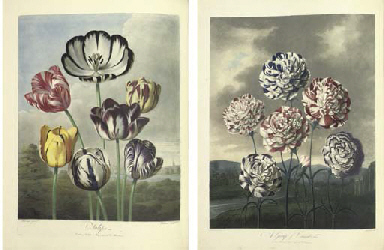
.jpg)
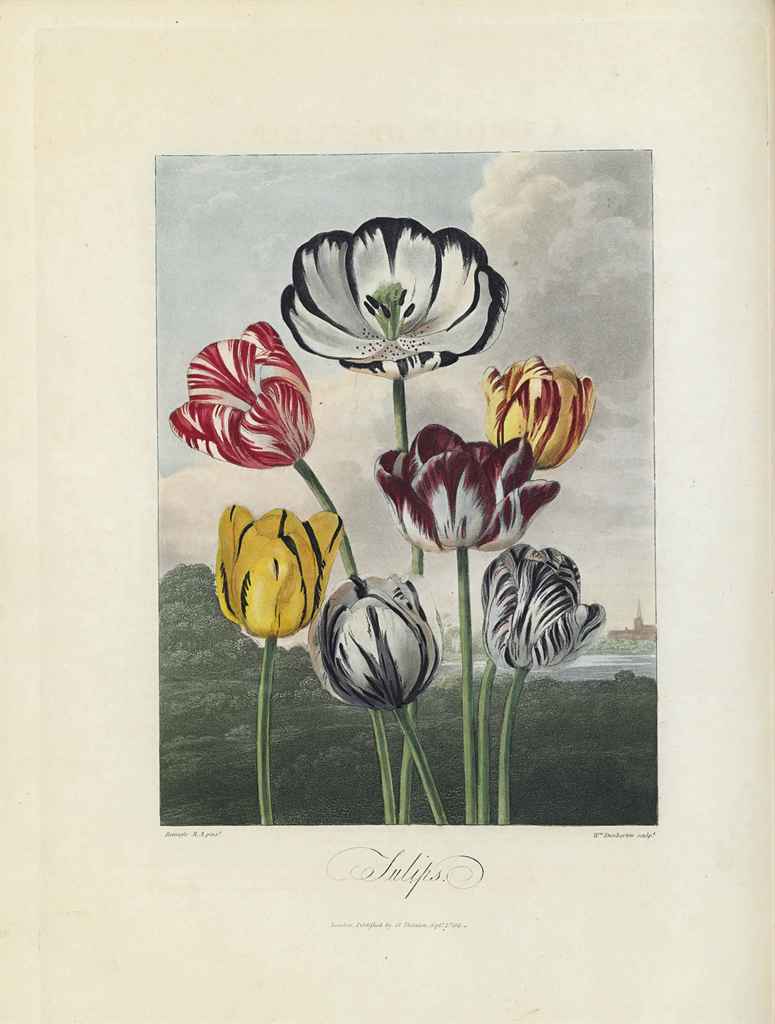


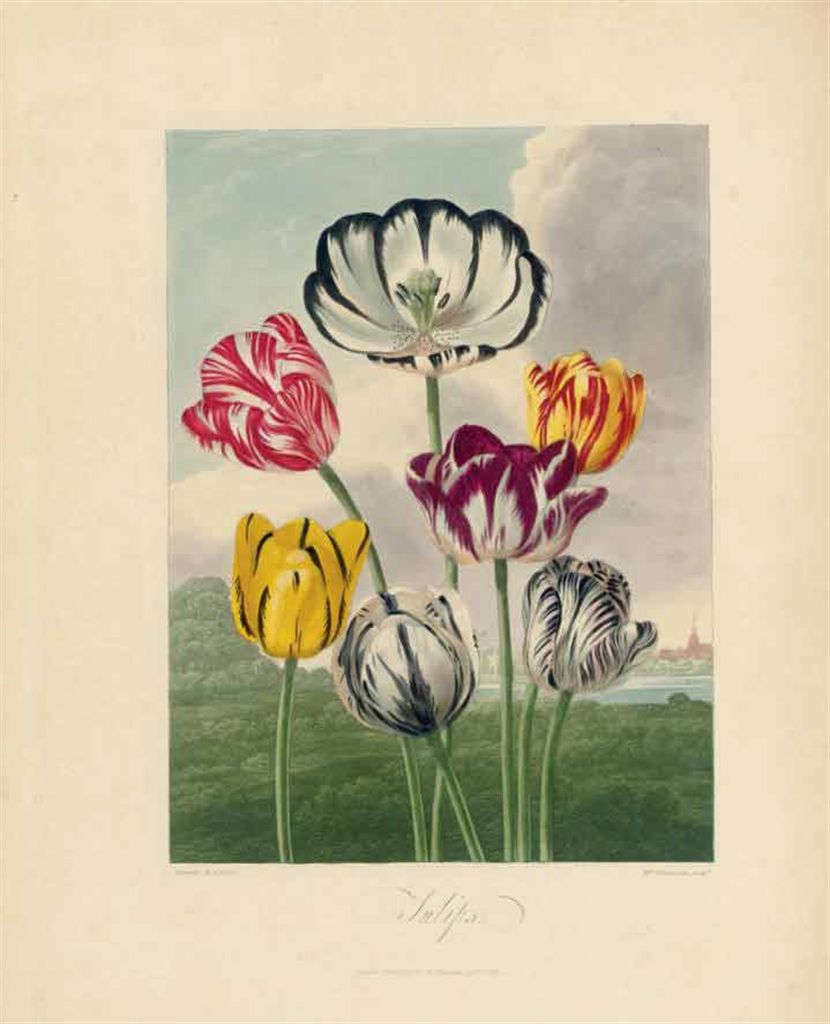
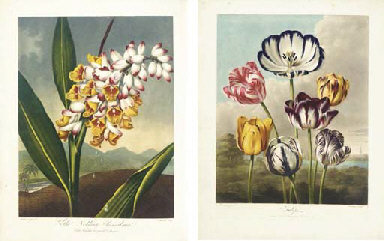
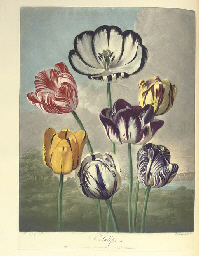



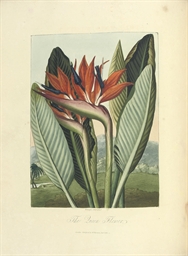
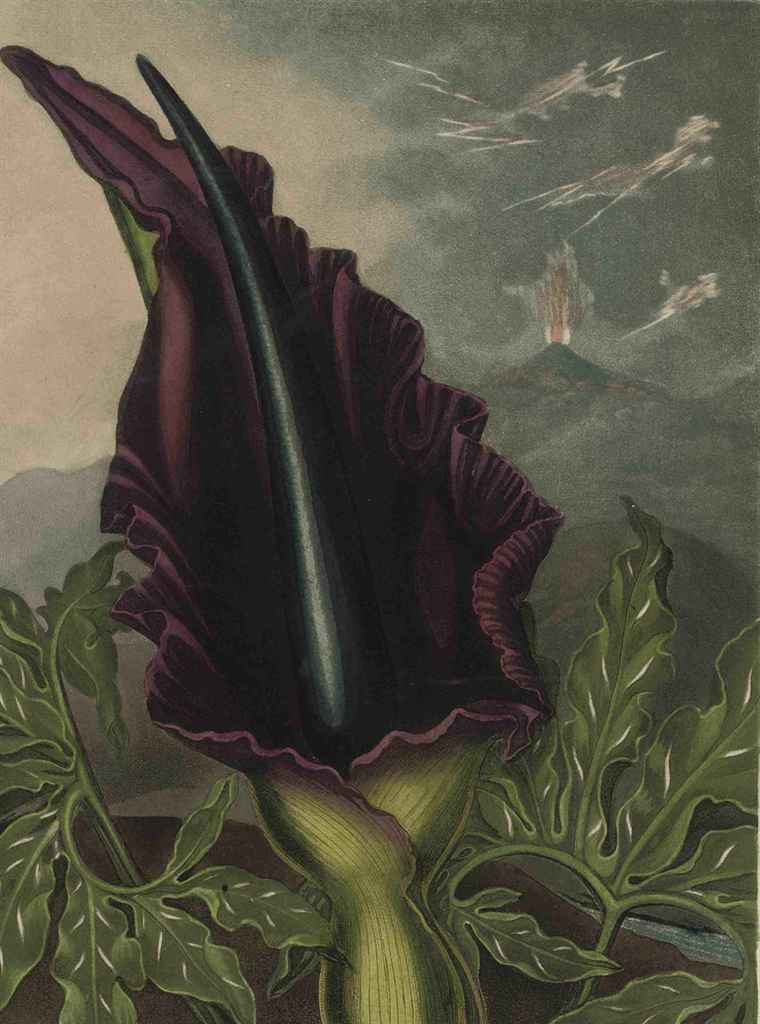


Try LotSearch and its premium features for 7 days - without any costs!
Be notified automatically about new items in upcoming auctions.
Create an alert